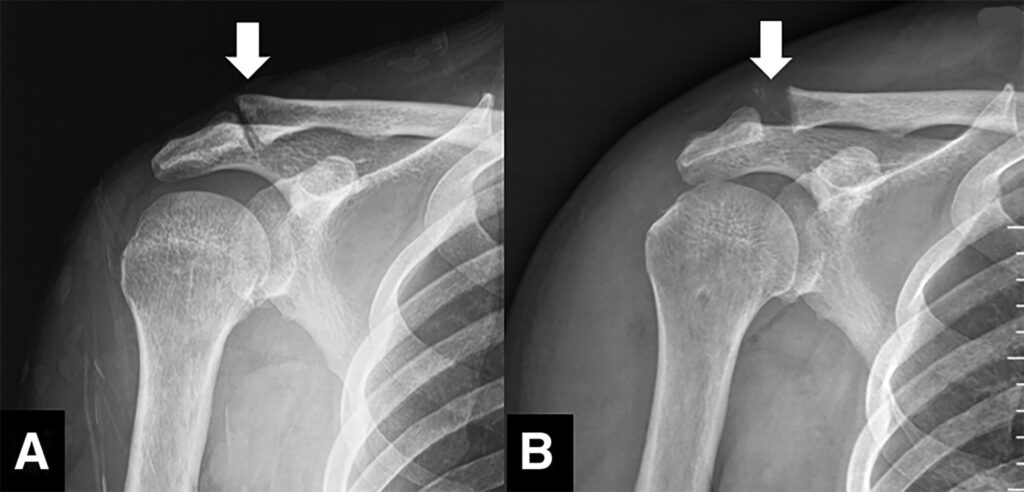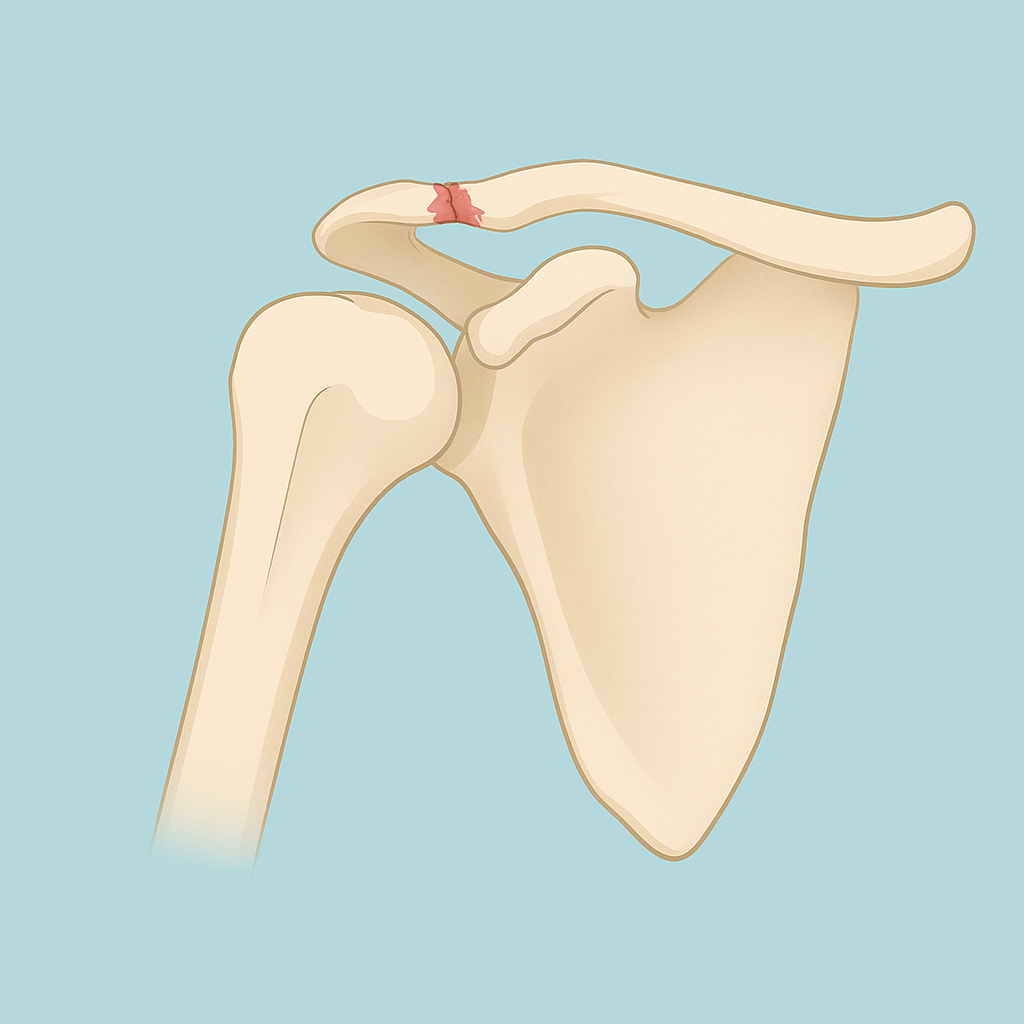Acromioclavicular Joint (ACJ) excision is a minimally invasive surgery that can be performed on its own or alongside other shoulder procedures, depending on your needs. Read more about ACJ arthritis and the non surgical treatment options below, or continue reading to understand more about surgical excision.
Indications for surgery
- Persistent pain due to ACJ arthritis that has not responded to conservative treatments
- Pain or dysfunction linked to repetitive strain, previous injury, or degenerative changes in the ACJ
- Reduced quality of life or difficulty performing daily tasks due to shoulder pain and limited movement
What the surgery involves
ACJ excision surgery can be performed as a keyhole (arthroscopic) or open procedure. The steps include:
- Small incisions allow the insertion of a camera and instruments to visualise the joint
- A specialised surgical tool removes the arthritic ends of the collarbone (distal clavicle) and, if needed, part of the acromion to relieve pain and prevent bone-on-bone rubbing

What to expect after surgery
Post-surgery discomfort is managed with prescribed medication, and a sling is typically required for 1–2 days, mainly for comfort. Gentle movement is also encouraged early on, with strengthening exercises introduced gradually. Most daily activities can be resumed relatively quickly, depending on individual progress.
How long will you need to spend in hospital?
ACJ excision surgery is performed as a day procedure, meaning no overnight hospital stay is required.
Usual recovery times
- First Few Weeks: Patients typically regain comfortable movement quickly, especially when ACJ excision is performed on its own
- 6 Weeks: Light strengthening exercises can begin
- 6–12 Weeks: Full recovery, including unrestricted activity, is generally achieved within this time frame
- Outcome: Patients often experience a significant reduction in pain and improved shoulder mobility
Potential risks
- There is a small risk that the AC joint may become unstable after excision, potentially affecting shoulder function
- Some patients may not experience the expected relief or functional improvement from the procedure
- Some patients may develop stiffness in the shoulder joint, which could limit movement temporarily or require additional therapy
- A rare but possible risk, infections at the surgical site may require antibiotics or further treatment
- There is a minimal risk of nerve damage, resulting in temporary or permanent numbness or weakness
Should you undergo surgery?
Take the time to weigh your options, consider the benefits and risks, and discuss your concerns with Dr Lambers. Surgery is a significant step, and the right decision should align with your needs, goals and lifestyle.

